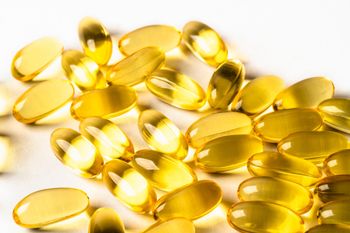
- Nutritional Outlook Vol. 24 No. 5
- Volume 24
- Issue 5
Antioxidants: Unique ingredient formulas make antioxidants a market of specialized research
An update on the new research and developments in antioxidant ingredients.
Throughout the plant kingdom, there are hundreds of different plants each containing many different bioactive compounds. The activities demonstrated by some of these compounds earn them the label antioxidants, and a huge market exists for these in health foods, beverages, and dietary supplements. “Antioxidants have broad appeal because they have been linked to disease prevention and health maintenance characteristics for a number of conditions,” says Steve Holtby, president and CEO of Soft Gel Technologies Inc. (Los Angeles), a manufacturer that provides many such ingredients.
But what separates one antioxidant ingredient from another? Educating consumers about antioxidants has not been easy, and marketers often simply tout that antioxidants help protect the body against oxidative damage caused by free radicals. By better communicating an ingredient’s specific advantages, however, could the industry help consumers make more informed decisions?
“To differentiate an antioxidant from a similar one already on the market, one needs to pay more attention to improvement in its health benefit, such as better delivery system, its manufacturing process (preferably no solvents), and its price,” says Holtby.
Others say the same. “Many factors influence the composition—thereby biological activity—of an extract, so different extracts, even derived from the same botanical sources, can and do function differently,” says Anthony Thomas, director of scientific affairs at Natreon Inc. (New Brunswick, NJ).
He adds: “The term antioxidant as used by industry is rather nebulous, as many chemical compounds exhibit various levels of antioxidant activity in a test tube but do not function as such in the body.”
Natural ingredients promoted for their antioxidant status range from polyphenolic compounds found in common fruits and vegetables to extracts born from lesser-known botanicals. Manufacturers should remember to focus on the research supporting what are often very specific ingredients. The following are recent and notable developments in the broad category of antioxidant ingredients. And there are countless others.
Spearmint
In the mint family alone, numerous plants, such as rosemary and oregano, are used to develop health products. But it’s spearmint (Mentha spicata) that contains the greatest amount of rosmarinic acid. For this reason, Kemin Human Nutrition and Health (Des Moines, IA) has committed itself to building a market around spearmint.
“Rosmarinic acid is an ideal antioxidant based on its molecular structure, which contains four hydroxyl groups,” says Kelli Herrlinger, director of clinical research at Kemin. “Each hydroxyl group has the capacity to donate an electron to unstable a free radical, thus reducing the harmful effects of the free radical.”
Rather than settling for spearmint already rich in rosmarinic acid, researchers at Kemin selected spearmint plants with especially high levels of rosmarinic acid and propagated them to be a replicable raw material for their spearmint extract. These plants have an estimated 10% dry weight of rosmarinic acid before flowering and are grown naturally in the field. The resulting extract is standardized for rosmarinic acid and more than 50 other polyphenols that are understood to behave synergistically in the body.
Most recently, Kemin’s spearmint extract was studied on a mouse stroke model in which the extract showed neuroprotective effects.1,2 The study is the first demonstration of the ingredient as a safe free radical scavenger in the reduction of stroke onset and symptom severity, and it follows previous trials on humans showing cognitive benefits. Kemin’s spearmint extract is sold under the brand name Neumentix. It’s already present in a variety of U.S. dietary supplements relating to focus and cognitive performance.
Ergothioneine
Mushrooms contain many compounds of scientific interest, including ergothioneine. This amino acid is present in many plants but more so in mushrooms. Scientists speculate that it is derived from fungi in the soil. Unfortunately, modern agricultural practices may reduce the amounts present in nature.
Blue California (Rancho Santa Margarita, CA), an ingredient supplier with vested interest in ergothioneine, says that prior to 2010 there were less than 100 published studies on ergothioneine. In the years since, more than 300 additional studies have been completed on the ingredient. In some scientific circles, the ingredient is known as the “longevity vitamin.” Humans even bear a highly specific transport protein for ergothioneine, and this has captivated the interest of the scientific community.
Intending to be more than just a distributor of ergothioneine, Blue California is involved with its own research on the ingredient. Last year, the company filed two U.S. patents on ergothioneine relating to 1) reducing oxidative stress trigged by inflammation, and 2) inhibition of telomere shortening associated with oxidative stress. Both indications make positioning the ingredient in healthy-aging products a likely choice for manufacturers.
Because of ergothioneine’s unreliable presence in nature, Blue California’s ergothioneine is manufactured via a proprietary natural fermentation process. This method helps ensure a stable price, commercial availability, and high purity.
Astaxanthin
The market for astaxanthin (Haematococcus pluvialis) grew substantially following beneficial coverage on the Dr. Oz television show back in 2011. Years later, consumers continue to purchase this red alga for uses ranging from sports performance to skin health. The continued success motivates astaxanthin suppliers’ ongoing investment and development.
BGG World (Irvine, CA) is actively marketing its astaxanthin in a synergistic combination with tocotrienols, and the company’s position is supported by a recent study3 finding that the two ingredients yielded greater improvements in cognitive health compared to either product alone. The company also speculates such synergy could cross over into other arenas like athletics and beauty.
In light of increasing concerns around the sustainability of palm oil, from which tocotrienols are often derived, BGG has switched out palm tocotrienols for ones derived from annatto and rice. Annatto is reportedly more concentrated in tocotrienols than palm, BGG says, and rice is said to be the only known plant source of tocotrienols present in all forms: alpha, beta, delta, and gamma.
A healthy market for astaxanthin recently motivated Stratum Nutrition (Carthage, MO) to enter the astaxanthin market, too. The company has partnered with an astaxanthin producer in the Chilean Atacama Desert. This region has the highest solar irradiance in the world, allowing for efficient production of algae under yearlong natural sunlight. Stratum sees particular promise for astaxanthin in the area of skin health in part due to an increasing body of supporting scientific evidence that the ingredient may reduce the appearance of fine lines and wrinkles, while providing other skin health benefits.
NextFerm Technologies (Yokneam, Israel), which sells a unique, fermentation-produced astaxanthin ingredient derived from Phaffia rhodozyma yeast, called Astaferm, has actively been pushing the envelope on delivery system innovation. Recently, the company debuted a fine, cold-water-dispersible powder especially geared to liquid applications. In addition, the firm will soon introduce an immunity-focused gummy featuring Astaferm alongside ingredients like vitamin D3, elderberry, and curcumin.
Elzaphan Hotam, CEO of NextFerm Technologies USA, says because Astaferm provides a high concentration of astaxanthin and is a flavorless powder, the ingredient sidesteps many of the sensory challenges otherwise associated with formulating gummies. The resulting gummies are not only potent but have good flavor and stability. It’s just the latest in the lineup of NextFerm introductions. Last year, NextFerm and Soft Gel Technologies collaborated on an Astaferm softgel.
Tree Bark Extracts
As sustainability remains top of mind for manufacturers and consumers alike, antioxidants from renewable resources are becoming more and more attractive. Extracts from tree bark fit the bill because they are rich in well-studied antioxidant compounds and are frequently procured from lumber waste and trees that are regrown. Several species of tree are prized for nutritional bark contents, including Dahurian larch (Larix gmelinii) and French maritime pine (Pinus pinaster).
Dahurian larch is commonly used to manufacture dihydroquercetin, a potent antioxidant that has been evaluated in more than 600 published studies. According to Nutralliance (Yorba Linda, CA), a distributor of dihydroquercetin, the ingredient bears one of the highest antioxidant levels on the market (measured by ORAC score). This is largely believed to be responsible for dihydroquercetin’s association with cardiovascular and cognitive health improvements in various studies. Not bad for an ingredient produced from tree stumps left behind from Siberian lumber harvesting.
For French maritime pine, DRT (Dax, France) has created a vertically integrated company that grows the pine trees, harvests them for various industries, and grows an equal amount of new trees with full transparency. From the leftover waste, DRT extracts a pine bark extract and sells it under the brand name Oligopin. Historically, the ingredient has been sold for its antioxidant contents and is frequently paired with vitamin C. New research4 on Oligopin suggests the ingredient may have beneficial use in osteopenia relating to the ingredient’s antioxidant strength and its impact on bone health.
Ginger and Acmella
While much of the antioxidants category is made up of well-known ingredient formulations, Indena (Milan, Italy) continues to develop new antioxidant formulas to complement its portfolio of longstanding ones. Last year, the ingredient supplier introduced Mitidol, a combination of ginger (Zingiber officinale) and toothache plant (Acmella oleracea) intended for general pain management.
Ginger has previously been studied for its potential pain-management use in athletes and women experiencing menstrual cramps. Alkamides are the principle active component of toothache plant and are associated with their own potential to act as a pain-management solution. Combined, the two ingredients in extract form demonstrate potential in human studies5 to improve markers associated with pain, in particular regarding knee function.
Turmeric
It comes as no surprise that turmeric (Curcuma longa) and its constituent curcumin remain leading ingredients in the botanical supplements market. Research continues to explore the possible benefits of this root to human health, even while so many published studies already exist. Most notably, researchers at Swinburne University in Australia completed a multi-week study6 on Longvida Optimized Curcumin, a patented turmeric extract from Verdure Sciences (Noblesville, IN).
The partial replication study aimed to detect significant differences in memory performance and fatigue among elderly subjects consuming Longvida versus placebo. Improvements observed at 4 and 12 weeks into the study provided confidence in a pattern of results “consistent with improvements in hippocampal function” as a result of consuming turmeric. The findings support a growing market interest in turmeric products for healthy aging and cognition.
“The interest in turmeric and curcumin continues to climb, and this increase in demand leads to a crowded marketplace with every brand claiming to be better or the best,” says Kristen Marshall, digital marketing manager for Verdure Sciences. The company has most recently expanded its business into the Brazilian market.
Myrobalan
Product manufacturers interested in a lesser-known ayurvedic ingredient may be interested in myrobalan (Terminalia chebula). Natreon Inc. has developed an extract from the fruits of this plant that yields a unique chemical composition unlike that naturally derived from myrobalan materials in the rest of the marketplace, the firm says. Named AyuFlex, it’s demonstrated meaningful benefits in areas of pain and joint discomfort in human trials.
“Although AyuFlex has shown high antioxidant activity, other biological mechanisms of action are likely contributing to the observed therapeutic effects based on available evidence, including inhibiting activity of enzymes that degrade connective tissues and generate proinflammatory fatty acid species, as well as the enzyme xanthine oxidase which reduces the body’s production of uric acid that can build up and contribute to joint degradation and pain,” says Natreon’s Thomas. “These specific biological effects will be more unique to AyuFlex, whereas general antioxidant activity that reduces oxidative stress and supports vascular function will be shared to varying extent with many more antioxidant ingredients.”
Natreon recently secured U.S. patents for the ingredient relating to the reduction of pain and inflammation associated with osteoarthritis.
References
- Taira Y et al. “Antioxidative effects of a novel dietary supplement Neumentix in a mouse stroke model.” Journal of Stroke and Cerebrovascular Diseases. Published online May 19, 2020.
- Bian Y et al. “A polyphenolic complex attenuates inflammatory response and blood-brain barrier disruption.” Current Neurovascular Research, vol. 17, no. 3 (2020): 286-293
- Sekikawa T et al. “Cognitive function improvement with astaxanthin and tocotrienol intake: A randomized, double-blind, placebo-controlled study.” Journal of Clinical Biochemistry and Nutrition, vol. 67, no. 3 (November 2020): 307-316
- Majidi Z et al. “Oligopin® supplementation mitigates oxidative stress in postmenopausal women with osteopenia: A randomized, double-blind, placebo-controlled trial.” Phytomedicine. Published online November 19, 2020.
- Rondanelli M et al. “The use of a new food-grade lecithin formulation of highly standardized ginger (Zingiber officinale) and Acmella oleracea extracts for the treatment of pain and inflammation in a group of subjects with moderate knee osteoarthritis.” Journal of Pain Research. Published online April 21, 2020.
- Cox KHM et al. “Further evidence of benefits to mood and working memory from lipidated curcumin in healthy older people: A 12-week, double-blind, placebo-controlled, partial replication study.” Nutrients. Published online June 4, 2020.
Articles in this issue
over 4 years ago
Energy Plus: Shoppers demand more from today’s energy productsover 4 years ago
Food and drink: What’s on the menu for immune support?almost 5 years ago
The personalized nutrition market isn’t one-size-fits-allNewsletter
From ingredient science to consumer trends, get the intel you need to stay competitive in the nutrition space—subscribe now to Nutritional Outlook.





